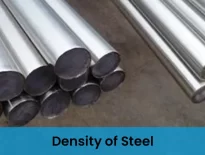Super Duplex stainless steel, as the name suggests, combines the characteristics of two main alloy types: austenitic and ferritic stainless steels. The microstructure of duplex material typically comprises an equal 50/50 mix of these phases, offering a balance of strength and corrosion resistance.
In metallurgy, stainless steel is an alloy containing at least 10.5% chromium, combined with other elements like nickel and molybdenum, and a maximum carbon content of 1.2% by weight. These alloys, including super duplex stainless steel, are renowned for their exceptional corrosion resistance, which improves as the chromium content increases. Adding nickel and molybdenum further enhances their resistance to chemical corrosion and improves mechanical properties.
The high corrosion resistance of super duplex and duplex stainless steel alloys comes from a process called passivation. For passivation to occur, the alloy must contain at least 10.5% chromium. This chromium content forms a stable, protective oxide layer on the surface, shielding the alloy from corrosive agents. Additionally, chromium serves as a hardening element, while nickel contributes to the toughness of duplex material, making it highly durable and versatile for demanding applications.
By combining strength, corrosion resistance, and mechanical stability, super duplex stainless steel outperforms many other stainless steel grades in challenging environments.
What Is Super Duplex Material?
Super duplex refers to a group of high-performance stainless steels containing approximately 25% chromium in their composition. The term “duplex” highlights the unique dual microstructure of these alloys, which consists of both austenitic and ferritic steel grains.
This dual-phase structure gives super duplex stainless steel its exceptional combination of strength, durability, and corrosion resistance, making it ideal for demanding industrial applications. The balance of austenitic and ferritic phases ensures superior mechanical properties and excellent performance in harsh environments.
History of Super Duplex Materials
Duplex stainless steel originated in Sweden, initially designed for the sulfite paper industry. These early alloys were developed to tackle corrosion issues caused by chloride-rich cooling water. While these alloys were a significant advancement, they didn’t fully address all industrial needs, prompting further innovation.
This led to the creation of super duplex stainless steel, with the first alloy of this type, Ferralium 255, being introduced by Langley Alloys in the 1960s. The term “super duplex,” however, was coined in the 1980s to describe highly alloyed, high-performance duplex materials with a pitting resistance equivalent (PRE) greater than 40. The formula for PRE includes chromium, molybdenum, and nitrogen levels (Cr% + 3.3Mo% + 16N%).
Over the years, additional super duplex grades, such as Super Duplex F61, were developed, with F61 debuting in 1969. These advancements have continuously improved the performance and versatility of duplex materials in demanding industrial applications.
Practical Uses of Super Duplex Stainless Steel
With its high chromium content, super duplex stainless steel offers excellent resistance to acids, acid chlorides, caustic solutions, and harsh environments commonly found in the chemical, petrochemical, and pulp and paper industries. This material also demonstrates superior resistance to stress corrosion cracking compared to standard austenitic stainless steels like the 300 series and regular duplex stainless steels (e.g., S32205). Additionally, its mechanical properties surpass those of standard duplex grades.
Super duplex materials are widely used in demanding applications, including pumps, valves, fasteners, pipework, and connectors. They play a vital role in industries such as oil and gas, petrochemicals, chemicals, and pulp and paper manufacturing.
Today, manufacturers like Langley Alloys provide an extensive range of super duplex stainless steel products, including solid bars up to 16” (406.4mm) in diameter, plates up to 3” thick, and access to pipes, flanges, and fittings through reliable supply chains.
Conclusion
Super duplex stainless steel stands out as a high-performance material with exceptional mechanical properties and corrosion resistance, thanks to its unique duplex microstructure. With its ability to withstand harsh environments and aggressive chemicals, this material has become indispensable in industries like oil and gas, petrochemicals, and pulp and paper. Its development marked a significant innovation in stainless steel technology, offering a reliable solution for demanding applications that require strength, durability, and resistance to stress corrosion cracking.
FAQs
What is a super duplex made of?
Super duplex stainless steels are high-performance alloys with around 25% chromium content and a mixed microstructure of austenitic and ferritic grains, enhancing strength and corrosion resistance.
What material is used in super duplex flanges?
Super Duplex Stainless Steel S32750 flanges are made from a high-performance alloy containing 25% chromium, 7% nickel, and 4% molybdenum, offering excellent corrosion resistance in chloride-rich environments.
Does super duplex rust?
Super duplex stainless steels offer exceptional corrosion resistance but can rust under extreme conditions, such as prolonged exposure to highly acidic or chloride-rich environments.


